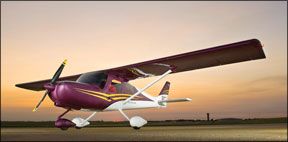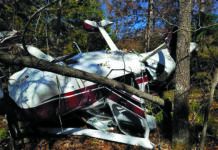CESSNAS CHINA PROBLEM Let me make you president of the U.S. Chamber of Commerce for a moment and place you in Cessnas boardroom at the opposite end of a 60-foot mahogany conference table from Jack Pelton. Youve just heard a team of MBAs explain how manufacturing the new Skycatcher LSA in China will reduce the cost of goods by $70,000. Your job is to convince Cessna that its wrong to ship the work to China. Heres the PowerPoint mouse, whats your pitch? (Send me an e-mail with the high points covered.) Acknowledging as how that $70,000 figure may be a plant for gullible reporters, only the equally gullible would believe that a U.S. factory could somehow match the China numbers. If we were talking about machine parts or plastics or some other segment where highly productive automation can beat Chinese cheap labor in productivity and quality, youve got a shot. But metal airplanes are still built with ballpeen hammers, Clecos and tin shears-lots of hand operations, not much CAM. You could play the emotional, patriotic card, but that wont fly against the MBAs remorseless spreadsheet. So what weve got here is a PR problem. If it were me, Id turn it into a PR plus by being as transparent as possible. Buyers need a better grasp of how difficult it is for companies to compete in the slim-margin LSA segment and in a manufacturing market increasingly dominated by China numbers. Further, Id split the difference-do parts and subassemblies in China, final assembly-not just winging the thing-in the U.S. and spread maybe half of that $70,000 number around Kansas so people there will have jobs to at least consider buying a Skycatcher. I submit there’s a way to be competitive without being-or appearing to be-greedy. And Id explain this plan in abundant detail because anyone who has a knee-jerk reaction to Cessnas China deal needs a lesson in the ways of the global economy. Although I am entirely sympathetic to those who decry the volume of business going to China, I would wager that many who complain the loudest don’t do much about it -and that would be to stop buying Chinese goods. Steer clear of Wal-Mart to start or, at the very least, read the labels before buying. And good luck. The penetration of Chinese goods into the U.S. market is extensive and pervasive. I tried to buy a bathroom scale the other day and looked at more than a dozen, seeking a U.S.-made label. Forget it. I don’t count myself among the Sino-phobic, but Im losing patience with shoddy goods. I turned a corner last spring when a made-in-China grease gun I bought to lubricate the hangar door-as dismal a piece of crap as I have ever seen-broke after a single use. Now I shop for the good stuff which, as we all know, is made in India. WAITAMINUTE, THOSE ARENT CESSNAS While Im dispensing advice, let me address Cessnas lapse in naming its airplanes. I was hoping to warm up to “Skycatcher,” but its not working for me. It sounds like the back half of a 1950s garage band name-“Tonight: Billy Ray and the Skycatchers!” Maybe Cessna could take a page from Princes book and call it 
The company has a similar problem with the Columbia line, which it acquired last fall and here, I think it really missed an opportunity. The pictures of what was the Columbia airplanes on Cessnas Web site are labeled Cessna 350 and Cessna 400. But the effect is utterly jarring and sadly unimaginative. Those airplanes are and always will be Columbias.
My view is that they should have named them Cessna Columbias. All of the Cessnas have both numbers and names-Skyhawk, Skylane and so on-and the 350 and 400 need similar treatment. Further, although branding is the darkest of arts and Cessna has certainly mastered it, Columbia achieved something with these airplanes and the name doesnt deserve to be buried like yesterdays trash.
-Paul Bertorelli





